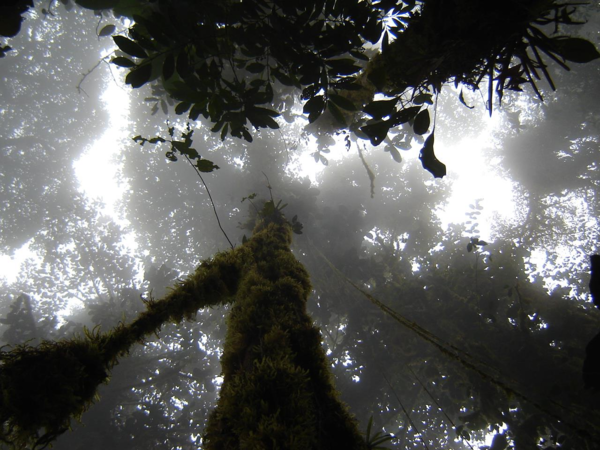Evidence for alternate stable states in an Ecuadorian Andean Cloud Forest
2 Fundación Cambugán
3 University of Oregon
4 Universidad de Los Andes
5 Universidad Lechero de la Finca
O 2.3 in Forest disturbances and future choices
14.10.2021, 12:00-12:15, H 36
Here we present an analysis of a successional dynamics in a tropical montane cloud forest in northern Andean Ecuador. Trees in plots from several types of forest distubance types were surveyed. The goal of the study was to enhance understanding of succession and regeneration in the Andean primary forest, and any potential long term effects of anthropogenic disturbance on plant community dynamics. We find that all primary forest sites are quite resilient to "natural" gap-forming disturbances: gaps are quickly colonized by old-forest-associated plant species, and return to an old-forest-type community of trees in a short time. In contrast, forests regenerating from anthropogenic disturbance appear to have multiple possible states: some regenerating forest sites on places where the anthropogenic disturbance were low are coming to closely resemble old-forest-type communities, but some where the anthropogenic disturbance was intense appear to be moving in a very different direction, which does not resemble any other vegetation community type currently in the forest. More intensively used sites, many of which are abandoned sugar cane plantations, appear unable to return to a pre-disturbance ecological state, instead forming a new and different kind of forest, dominated by a different community of trees. We examine tree-seedling communities to understand the trajectory of the forest into the future, and find that new forest types may be forming that do not resemble any existing associations. We estimate approximately 500 species of tree in only the small southeastern area of the reserve that has been explored scientifically. Tree community shows extremely rapid distance decay, approaching near complete turn-over in the limited span of the study indicating that hundreds of other tree species possibly remain to be observed in the reserve. We also highlight the conservation value of Reserva Los Cedros.

Sunny day in Los Cedros forest
Keywords: Ecuador, Cloud forest, Montane tropical rain forest, Tropical Andes Bioiversity Hotspot, Succession, Alternate stable states, forest disturbance
Export as iCal:


